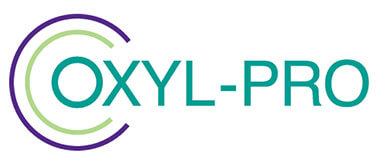You can use silver as a residual disinfectant to prevent the formation of biofilm in water. Silver has an antimicrobial effect, but it can also have adverse effects on human health and on the environment.
Common forms of silver as a disinfectant are silver nitrate and silver nanoparticles (silver NP).
How Does Silver Disinfect Water?
The antimicrobial properties of silver are long-established. It was used for containing water and oils by the Phoenicians, and the Romans stored wine in silver vessels to preserve it.
In the 1800s, silver was used to close up wounds and fight infections. It continues to have various applications as a disinfectant in the present day.
This is because silver has a natural ability to kill microorganisms.
Silver destroys the cell membranes of microorganisms. It prevents their metabolism and respiration by binding itself to their internal enzymes.
It also prevents microbial cells reproducing by binding to their DNA and RNA, which are the blueprints for manufacturing new cells.
The object of water disinfection is to remove or inactivate microbiological contaminants in it. There are various ways of doing this, such as chlorination. But chlorination can have its disadvantages, such as giving some water supplies a distinctive smell and taste.
Silver nitrate is an established water disinfectant, when used in low concentrations. Its success depends on various factors including:
- Concentration
- pH
- Exposure time
- Temperature.
The presence of other chemical in the water can also influence how well silver performs.
Silver nanoparticles can be more successful than silver nitrate, in this regard, proving efficient in removing and deactivating microbes, through metallic disinfection and physical filtration.
The larger surface to volume ratio of silver nanoparticles can result in a higher surface exposure to microbes, leading to more efficient antimicrobial activity.
Is Silver Toxic to Humans?
Silver can have adverse effects on human health and on the environment. It is not highly toxic, but prolonged exposure can lead to health problems and other issues.
One outward effect of breathing in or digesting silver compounds over a long period is a condition called argyria. This results in a permanent discolouration of the skin, giving it a blue-grey hue, but it does not have harmful health effects.
During the chemical manufacturing of silver nitrate, exposure to dust containing high levels of silver compounds can lead to breathing problems, irritation to the lungs and throat, and stomach pain.
Studies on animals suggest that prolonged exposure to silver nitrate at moderately high levels may have a slight effect on the brain. There is no evidence as yet that it affects humans in the same way.
There is evidence that silver nanoparticles can cause severe environmental damage in certain conditions.
Currently silver nanoparticles are used in textile manufacturing to enhance the antimicrobial qualities of clothing. But when this clothing is washed, it adds silver content to wastewater.
Consequently, wastewater sludge in water treatment plants can contain significant increases of silver content. If this sludge then gets used as fertiliser, it can cause long-term damage to agricultural land.
Silver is also routinely applied to health supplements, as colloidal silver, where there are claims it can work as an antibacterial agent.
But here too, silver may present health risks.
Can Colloidal Silver Damage Kidneys?
In holistic health, colloidal silver is a popular product. However, there is no official medical evidence that it has health benefits.
It may, in fact, interact with prescription medicines such as certain quinolone antibiotics. And it can interfere with how the body absorbs certain drugs.
Prolonged use may lead to a build-up of colloidal silver in tissues, eventually causing argyria (see above).
Another potential side effect of taking colloidal silver supplements is kidney damage. This is because silver is partially cleared by the kidneys, and studies have shown that elevated silver in the blood can cause kidney problems in dialysis-dependent people.
Alternatives to Silver as a Disinfectant
Both iodine and bromine are alternative drinking-water disinfectants to silver, as well as chlorine.
Bromine is more soluble in water than iodine, but less soluble than chlorine. Chlorine, as we have mentioned, can raise issues such as taste and smell, when added to water.
Generally, bromine is used as an alternative disinfectant for swimming pools and spas, but not drinking water.
Iodine requires higher concentrations than chlorine to achieve a comparable effect as a disinfectant, and its safety for long-term consumption is not established.
Another alternative for water disinfection is hydrogen peroxide. But normally this is silver-stabilised, and there are pollution issues around its disposal.
However, there is now a next generation disinfectant that is hydrogen peroxide-based, but uses only food safe ingredients in its formulation.
Oxyl-Pro is the result of a unique stabilisation process, creating a powerful, multi-purpose disinfectant containing no silver or heavy metals.
It is effective against bacteria, viruses, moulds, yeast and fungi, and it has a range of water treatment applications.
For more information about the Oxyl-Pro product range, please complete our contact form, call us on +44 1606 851 782, or email enquiries@oxylpro.com

